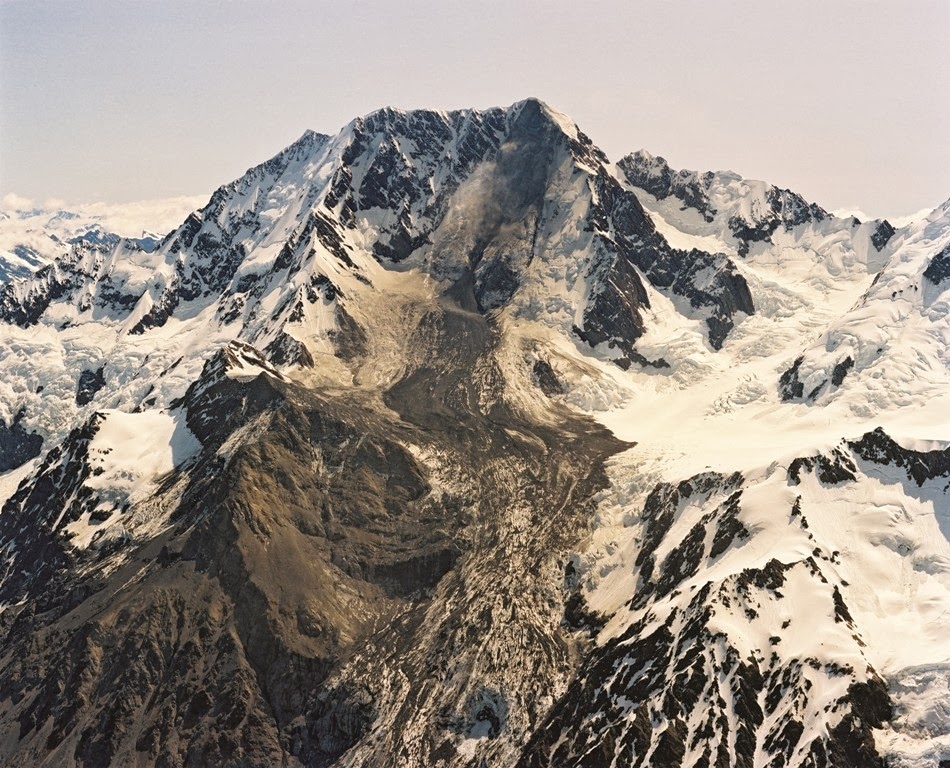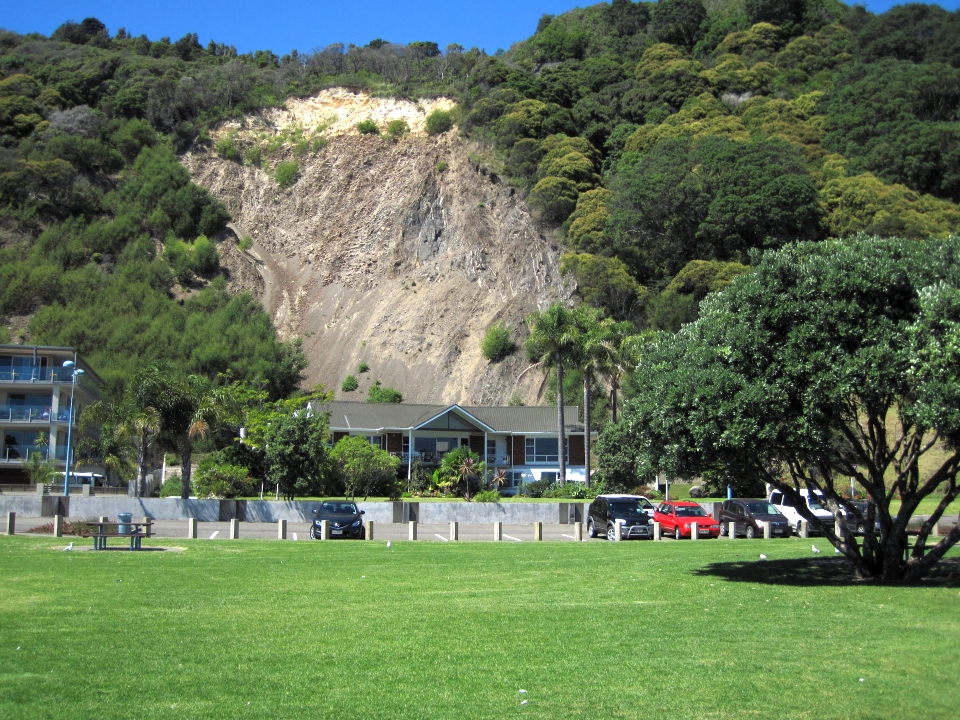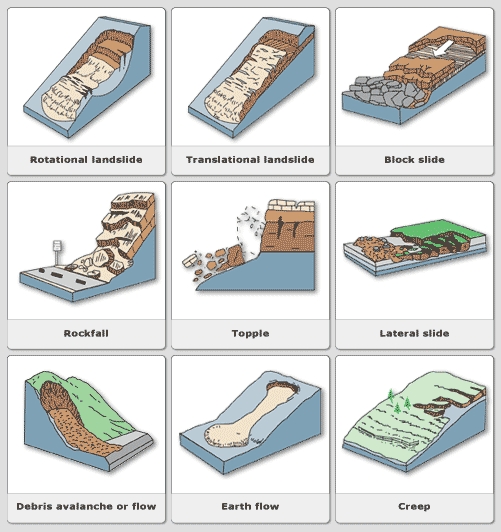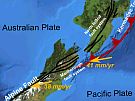Unstable land
Compared to many other countries, New Zealand has a high number of landslides because:
- land is still being uplifted
- rocks are often weakened by geological folding and faulting
- there are frequent earthquakes
- much of the land is hill country, formed by rivers cutting into soft clay rocks
- slopes can be unstable, weak layers of volcanic ash or loess
- rainfall can be high.
Some landslides move whole mountain sides, taking millions of cubic metres of material, at up to 200 kilometres per hour. Others are shallow or slow, moving only a few centimetres a year.
Causes
On unstable slopes, three things are important in producing large landslides:
- land conditions, such as weak rock and steep slopes
- processes which further weaken the slope, such as deforestation or undercutting by streams
- triggering factors such as intense rainstorms (100 millimetres or more in 24 hours) and large earthquakes (magnitude 7 or greater).
Human impact
Deforestation has had the largest impact on the stability of hillsides. Clearing land for farming has increased landslide activity by about seven times its natural rate. Road construction and subdivision earthworks can also destabilise slopes and increase landslide rates.
Types of landslides 
There are different types of landslides, these include:
- alpine landslides – in the mountains, rock avalanches, rock slides, lahars, rock falls and debris flows
- low mountain landslides – in lower mountain ranges, can be single events or gradual movement over a long period of time
- layered rock landslides – where one hard layer of rock slips off a soft layer of rock due to its weight and a build-up of groundwater between the layers
- rotational landslides – common in New Zealand’s hill country where a series of rigid blocks slump downwards, often rotating on a curved surface
- creeping earthflows – where the ground on gentle slopes moves a few metres each year, often during winter months when the ground is very wet
- regolith landslides – one of New Zealand’s most widespread types of landslide. These occur when the loose rock and soil above bedrock slides. Often large numbers of these slides will occur at the same time during rainstorms.
- submarine landslides – occur offshore on the continental slope. These can be bigger than those seen on land and even trigger tsunamis.
Cost
Each year local councils, roading authorities, private landowners and railway operators spend millions of dollars clearing slips from roads and railway lines. It is a never-ending task – there are always more floods or earthquakes to come, and there is plenty of rock and soil waiting to tumble down.
In general, landslides are more common in New Zealand than many countries because of the terrain and less stable conditions. However, landslides cause few deaths in New Zealand because there are few settlements in mountainous areas and the population density is relatively low.









